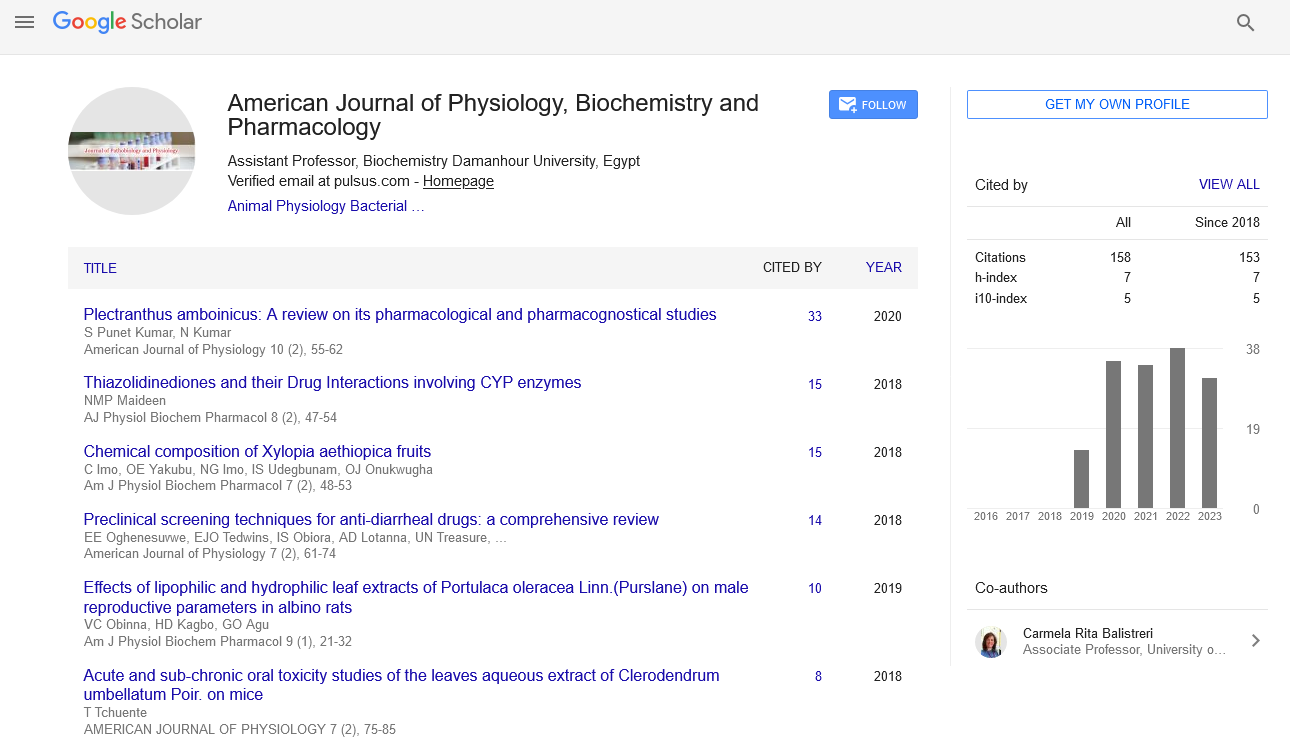Perspective - American Journal of Physiology, Biochemistry and Pharmacology (2023)
Exploring DNA Sequencing: Methods and Advancements
Sanvi Priya*Sanvi Priya, Department of Biochemistry, Sathyabama University, Chennai, India, Email: Priya_Sanvi13@gmail.com
Received: 22-May-2023, Manuscript No. AJPBP-23-101481; Editor assigned: 24-May-2023, Pre QC No. AJPBP-23-101481(PQ); Reviewed: 07-Jun-2023, QC No. AJPBP-23-101481; Revised: 15-Jun-2023, Manuscript No. AJPBP-23-101481(R); Published: 22-Jun-2023
Description
The field of DNA sequencing has witnessed remarkable progress over the years, revolutionizing the understanding of genetics and enabling breakthroughs in various disciplines, from medicine to forensic science. DNA sequencing is the process of determining the precise order of nucleotides within a DNA molecule. By unravelling the intricate genetic code, scientists have unveiled vital insights into the building blocks of life. This article explores the information about DNA sequencing, highlighting its significance, key methods, recent advancements, and potential applications.
Importance of DNA sequencing
DNA sequencing holds immense importance in numerous areas of scientific research and practical applications. It enables scientists to investigate the genetic basis of diseases, facilitating the development of personalized medicine. Furthermore, it plays a crucial role in understanding evolutionary relationships, biodiversity, and the functioning of ecosystems. In forensics, DNA sequencing provides a powerful tool for identification and crime scene investigations. Additionally, it aids in genetic engineering, agricultural improvements, and the study of ancient DNA. The ability to sequence DNA accurately and rapidly has unlocked a multitude of possibilities for scientists and society as a whole.
DNA sequencing has revolutionized the scientific landscape, providing insights into the blueprint of life. The continuous advancements in sequencing technologies and analytical tools hold great promise for unravelling the complexities of genetics and facilitating advancements across various fields, ultimately leading to improved health outcomes and a deeper understanding of the world around us.
Key methods of DNA sequencing
Several innovative techniques have been developed for DNA sequencing, each with its unique strengths and limitations. Sanger sequencing, also known as the chain-termination method, was the first method to be widely adopted. It involves DNA replication, incorporating modified bases that halt replication at specific positions, enabling the determination of the DNA sequence. Next-Generation Sequencing (NGS) revolutionized the field, allowing high-throughput sequencing of millions of DNA fragments in parallel. NGS methods, such as Illumina sequencing, rely on sequencing-by-synthesis principles, generating vast amounts of sequencing data. Another technique, known as nanopore sequencing, utilizes nanopores to measure changes in electrical current as DNA molecules pass through them, providing real-time sequence information.
Recent advancements in DNA sequencing
The realm of DNA sequencing has witnessed tremendous advancements in recent years. One notable breakthrough is the emergence of third-generation sequencing technologies, such as PacBio and Oxford Nano pore sequencing. These techniques offer longer read lengths, reducing the need for DNA fragmentation and assembly, and enabling the sequencing of complex genomic regions. Moreover, advancements in bioinformatics and computational tools have improved the accuracy and speed of DNA sequence analysis, allowing researchers to uncover genetic variations and structural rearrangements with greater precision.
Additionally, the advent of single-cell sequencing has revolutionized the understanding of cellular heterogeneity. By sequencing individual cells, researchers can explore the diversity within a tissue sample, unravelling the complexity of biological systems.
Applications and future implications
The impact of DNA sequencing on healthcare is profound. It enables the identification of disease-causing mutations, leading to improved diagnosis, targeted therapies, and personalized medicine. Cancer genomics, for instance, relies on DNA sequencing to understand tumour heterogeneity and guide treatment decisions.
In agriculture, DNA sequencing aids in crop improvement by identifying genes responsible for desirable traits, enhancing breeding programs, and developing genetically modified organisms with enhanced characteristics.
Furthermore, DNA sequencing has tremendous potential in the field of synthetic biology, allowing scientists to engineer novel biological systems and organisms with precise genetic modifications.
DNA sequencing has revolutionized the scientific landscape, providing insights into the blueprint of life. The continuous advancements in sequencing technologies and analytical tools hold great promise for unravelling the complexities of genetics and facilitating advancements across various fields, ultimately leading to improved health outcomes.
Copyright: © 2023 The Authors. This is an open access article under the terms of the Creative Commons Attribution NonCommercial ShareAlike 4.0 (https://creativecommons.org/licenses/by-nc-sa/4.0/) This is an open access article distributed under the terms of the Creative Commons Attribution License, which permits unrestricted use, distribution, and reproduction in any medium, provided the original work is properly cited.






